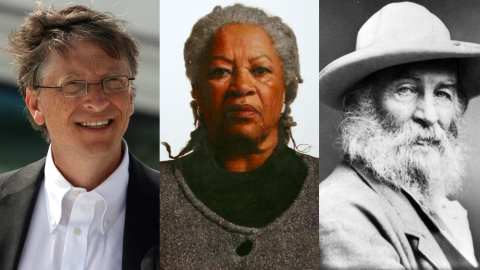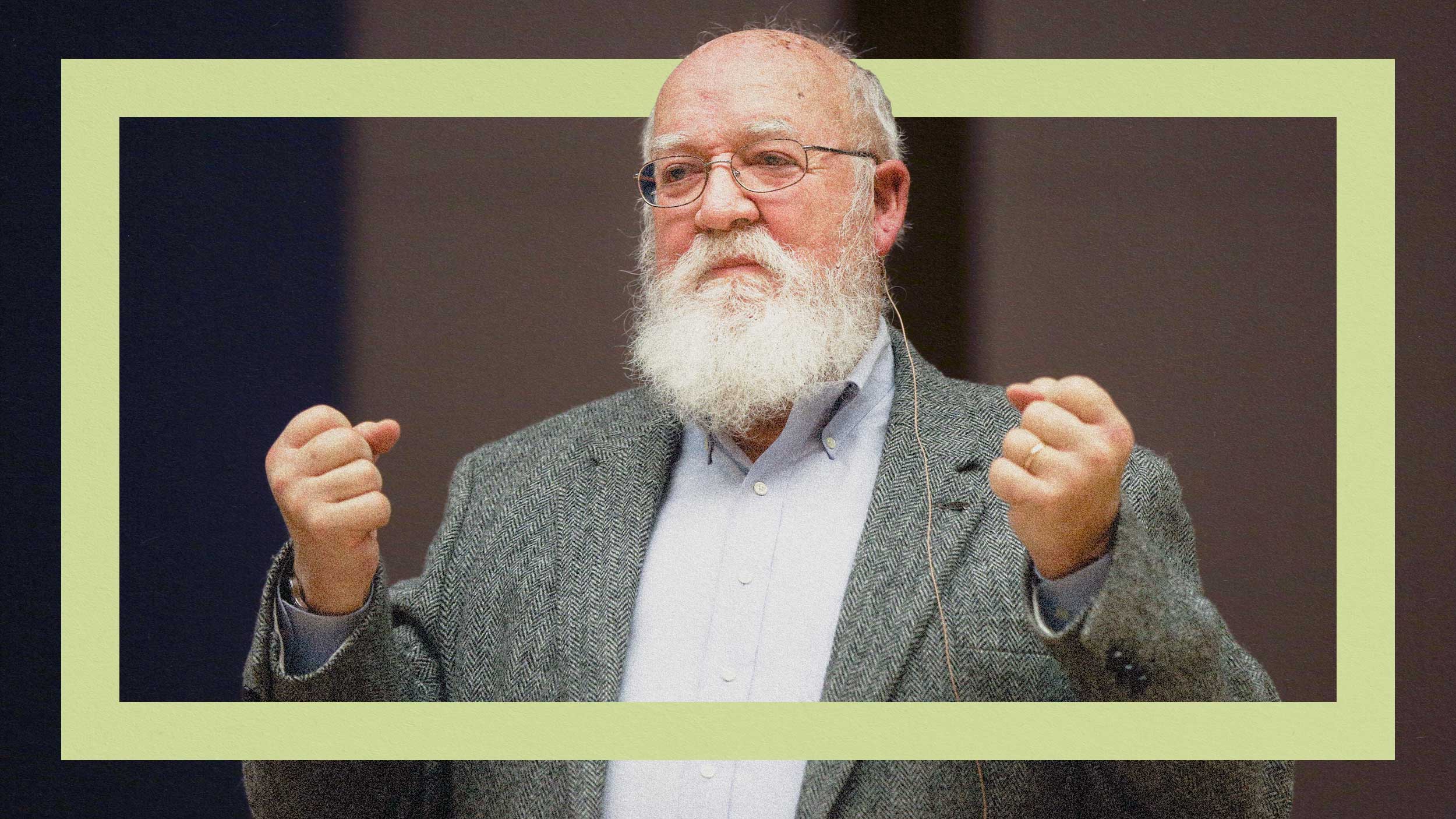History’s self-actualized individuals used this mental tool kit. You can, too.

Maybe you’ve heard the term “self-actualization” bandied about at a party or by an inspirational speaker? Popularized by psychologist Abraham Maslow, the theory argues that we can realize our full potential by utilizing our aptitudes so that we can live with intention, in contentment, and on our terms. Basically it’s #bestlife without the humblebrag.
Once Maslow’s theory gained traction, proponents began to characterize it as a pyramid. Its lower levels consist of our basic needs. Think food, water, safety, etc. Next up come our psychological needs, such as love, belonging, and esteem. And once we have those in place, we can begin the process of self-actualizing. As Maslow wrote in his diary: “I think of the self-actualizing man not as an ordinary man with something added, but rather as the ordinary man with nothing taken away.”
Yet precious few people seem to reach this stage. That’s odd because we live in a promising age. On average, we have more food, work fewer hours, and have higher life expectancy than at any point in human history. Literacy and education rates have similarly soared, and while there’s still much work to be done, we’re taking steps toward destigmatizing mental illness and improving mental health.
Given the pyramid’s foundational layers, you’d think self-actualization would be readily within reach, but many of us don’t feel we’ve taken the first step. Why? Because beginning the process of self-actualization requires us to discover our “element”: That activity or endeavor that resonates strongly with us and feels right and rewarding to pursue.
But as author and international advisor on education Sir Ken Robinson tells us, society has put up obstacles hindering this progress. And in truth, we’re responsible for a few of those barriers, too.
Maslow drew his examples of self-actualized individuals from history. He pointed to Thomas Jefferson for his democratic character and Abraham Lincoln for his thoughtful, and often elucidating, humor. But self-actualized people represent the gamut of human experience, historical and contemporary.
They include intellectuals such as Aldous Huxley and John von Neumann; writers such as Walt Whitman, Toni Morrison, and Sandra Cisneros; and activists such as Eleanor Roosevelt and Frederick Douglass. Nor do they need to fit neatly into professional cliques. Angela Merkel, Neil Armstrong, Paul McCarthy, and Jim Carrey have little in common, yet all have achieved a self-actualized state.
How? They have equipped themselves with a mental toolkit that allows them to dig deep and find those precious intellectual resources buried just beneath the surface.
By researching people who live in their element, we’ve discovered five such tools:
Read daily
Reading provides a bevy of mental benefits. Studies suggest it improves communication skills, spatial navigation, and information processing abilities. It also furthers our internal and external quests. Non-fiction explores areas of the external world beyond our daily lives, while fiction explores the internal world and builds our empathy resources.
It’s one of a handful of habits that tie self-actualized together. Bill Gates reads about a book a week, and we’re all familiar with Oprah Winfrey’s love of books.
Develop an empathic outlook
The self-actualized are driven to help others and improve lives. If we are to do the same, we’ll need a well of empathy and compassion to draw upon.
History’s most famous example is Martin Luther King Jr, who is best remembered for his activism on behalf of African-American rights. But his empathy wasn’t limited to the group to which he belonged. King opposed the Vietnam War on the grounds that he could not stand to consider a fellow human his enemy.
“No document from human hands can make these humans any less our brothers…I must be true to my conviction that I share with all men the calling to be a son of the living God,” King said.
It’s a legacy carried on by another self-actualized person, Barack Obama. Speaking on the 50th anniversary of the March on Washington, Obama noted:
[This march] teaches us that we are not trapped by the mistakes of history, that we are masters of our fate, but it also teaches us that the promise of this nation will only be kept when we work together. We’ll have to reignite the embers of empathy and fellow feeling.
Learn Socratic dialogue
Whether because of their realistic outlook, their problem-centered approach, or their nonconformity, the self-actualized will certainly find people with whom they disagree. But they don’t argue to prove their intellectual or moral righteousness, or to chalk up another win for their side.
Instead, they employ conversation and debate to not only represent their beliefs but to learn. We should do the same.
Socrates provides the most famous example. His method of discourse relied on asking questions, actively listening to the response, and deeply exploring that response in good faith. With this approach, he not only helped others see their beliefs in a new light but taught himself in the process.
As Sira Abenoza, founder of the Institute for Socratic Dialogue, put it:
“All of us have a great amazing knowledge inside of us. The thing is that we need others to help us give birth to that knowledge, unravel those ideas that we have inside of us. So, in that sense, if we want a dialogue, we will have to see the other as somebody who has that potential in them. And dialogue will be about collaborating, it’ll be about teamwork.”
Embrace failure
The self-actualized aren’t stymied by failure. They have taken down their ego defenses and can roll with this unpleasant reality with honesty and integrity.
Author Neil Gaiman urges his students to fail: “Because if you are making mistakes, then you are making new things, trying new things, learning, living, pushing yourself, changing yourself, changing the world. You’re doing things you’ve never done before, and more importantly, you’re doing something.”
To help embrace failure, it’s worth remembering all the beneficial outcomes it brings. Scientific progress is built on failure. Discovering flaws during R&D produces safe and reliable products. And of course, artists use failure to develop the skills necessary to create great works.
Practice solitude
The self-actualized require alone time. It’s not that they are recluses shunning human fellowship. Far from it. But in solitude, they can be creative, work on problems, assess their progress, and just enjoy time with their thoughts.
Consider what artist Louise Bourgeois wrote on the topic in her diary: “After the tremendous effort you put in here, solitude, even prolonged solitude, can only be of very great benefit. Your work may well be more arduous than it was in the studio, but it will also be more personal.”
Famous inventor Nikola Tesla (who, ironically, proposed the idea of wi-fi) also believed in the power of solitude, saying, “The mind is sharper and keener in seclusion and uninterrupted solitude. No big laboratory is needed in which to think. Originality thrives in seclusion free of outside influences beating upon us to cripple the creative mind. Be alone, that is the secret of invention; be alone, that is when ideas are born.”
In today’s always-connected world, solitude has become a precious commodity. Because of this, it’s one we need to guard all the more fiercely.




